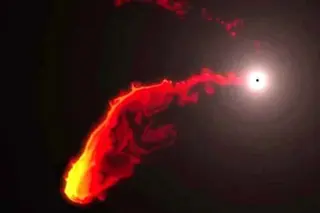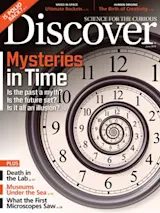Last year, astronomers turned to the supermassive black hole at the center of our galaxy to watch it tear apart a dusty gas cloud called G2. It was an event widely anticipated, including in Discover (“To the Edge and Back,” September 2014, “When a Slumbering Monster Awakens,” April 2014 and “Our Black Hole Lights Up,” January/February 2014).
September 2014
The discovery of G2, which was estimated to have the mass of three Earths, was announced in January 2012 by Stefan Gillessen of the Max Planck Institute for Extraterrestrial Physics. Gravity from the black hole, called Sagittarius A*, already had begun stretching G2, Gillessen’s team said.
The gas cloud was expected to make its closest approach in early 2014, plowing through the hot, magnetic plasma that surrounds the black hole. G2 would stretch like soft taffy and glow in X-rays, and some of the gas would spiral down the black hole, ...















